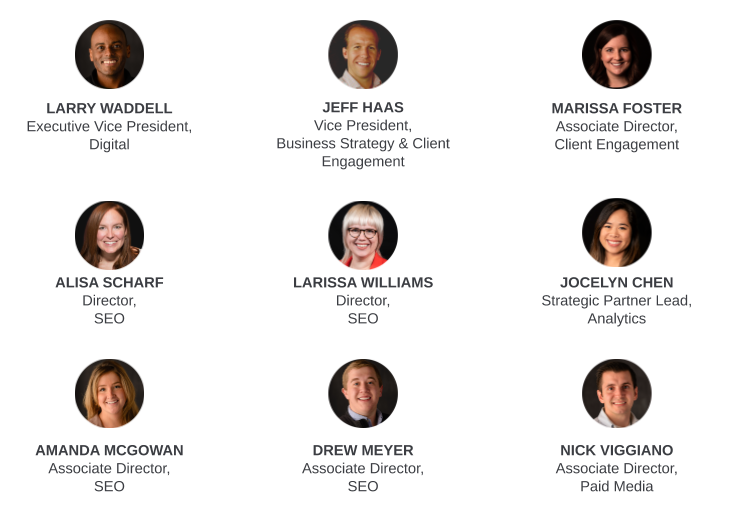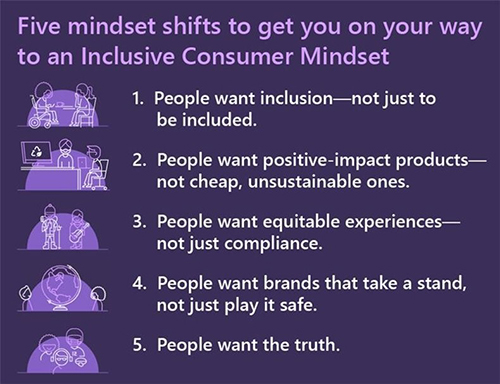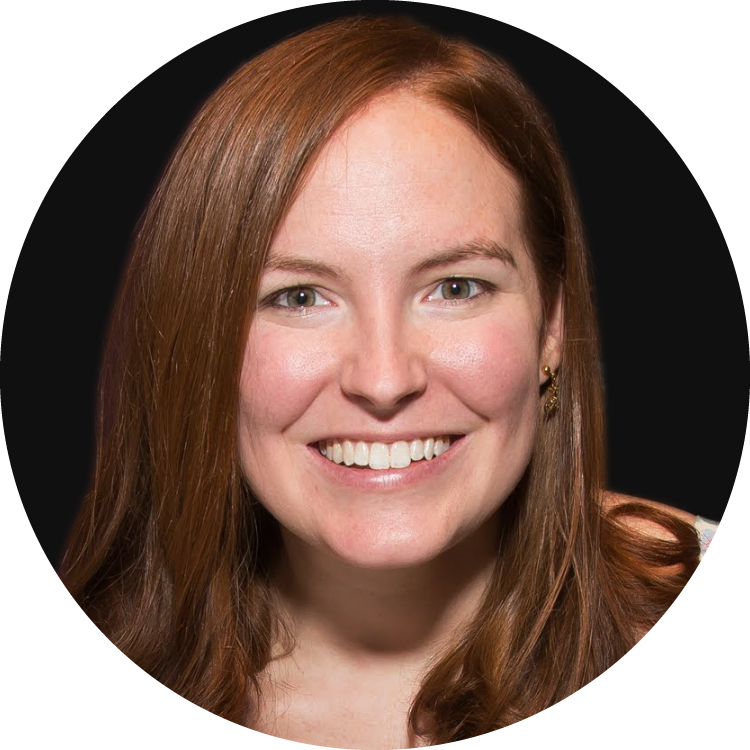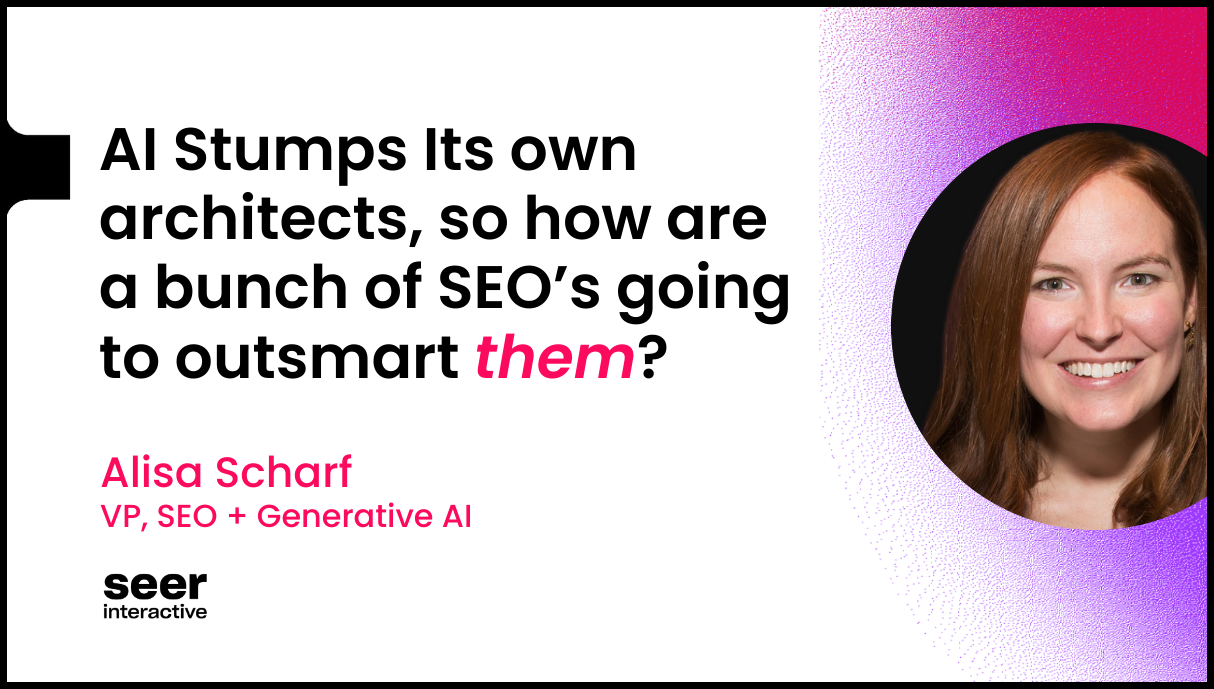We surveyed members of our leadership team who have purview over Seer’s 100+ clients on the impacts of COVID-19 on their businesses across industries. Enclosed are suggestions to tap into your consumers, leverage data differently, and prepare for a new future.
It’s now been over two months since the nationwide stay at home orders went into effect due to COVID-19, and in that time a lot has changed across Seer’s 100+ clients. Seer’s leadership team has been heavily involved in the success and viability of each brand we’re lucky to call a partner, so we asked them: what are the sights and sounds at this juncture?
One common theme unfolded: when asked if clients have pivoted strategy, the unanimous answer was yes.
In this perspective piece, we’ll dig into how this is unfolding both short- and long-term across industries such as finance, healthcare, industrial, retail, education, and everything in between.
First, let’s introduce our contributors:

Strategic Pivots & Data-Informed Decisions
We Asked: What was the motivation behind strategic shifts or budget pullbacks?
Some clients decided to make strategic and budgetary shifts quicker than you can say the word “pandemic,” and others have taken a slower “wait and see” approach.
Either way, we’ve seen pivots across every industry, with the impact ranging from nominal to severe.
“I think CFOs led the budget reviews at some clients with a “cut first, ask questions later mentality.” - Larry Waddell, EVP, Digital
Clients with a shorter cash runway and a reliance on brick and mortar made the quickest changes -- which in turn increased their reliance on digital channels essentially overnight.
"Clients had to quickly embrace digital acceleration in their core business." - Alisa Scharf, Director, SEO
We’ve observed budgetary shifts being precipitated by two core reasons:
- Cash position: some of these clients have the demand potential to be in market, but need to pull back due to budget constraints
- Strategically fueled by business model or demand: those who, without a fundamental business change or signs of a return to “normal,” are inapt in the state of the world
We Asked: Have your clients begun to plan for coming back? What questions do they need to answer to inform this decision?
The companies we work with are at the mercy of public policy and signals of normalcy. But, there isn’t consistency nationwide. Accordingly, many clients have implemented regional strategies that require much more tailoring.
“Labor and manufacturing have been impacted due to stay at home orders in certain regions, so the strategy needs to be much more targeted as brands ramp back up.” - Marissa Foster, Associate Director, Client Engagement
“They are figuring out what levers they can pull as soon as legislators lift restrictions i.e. what is the fastest way they can get their cash flow going again? Have consumers changed their buying behavior? Will they have other alternatives to consider now that they've been at home, be more risk averse to group activities, etc?” - Jocelyn Chen, Sr. Analytics & Strategic Partner Lead
We’ve also seen client anxieties rise regarding competitive activity, and using that as a signal to make a strategic move.
“We are generally being asked, "What are other companies doing in our industry?" I hear questions about the competitor set far more often than questions about what consumers are doing.” - Larissa Williams, Director, SEO
When it comes to cultivating a plan, discussions around ROI are now a focal point. A common question Drew Meyer, Associate Director, SEO, gets from clients and prospects alike: "How do we increase ROI on our project or get more juice out of the orange?"
We Asked: What data points are clients measuring generally through the COVID-19 crisis?
“KPIs themselves haven't changed: revenue and ROI are being given a greater emphasis.” - Larissa Williams, Director, SEO
💡 Other than keeping a pulse on the changing state and federal orders, there is a strong reliance on efforts to preserve and improve cash flow.
“One client saw this opportunistically and cut spending in order to be in a position to potentially make an acquisition.” - Alisa Scharf, Director, SEO
When it comes to marketing efforts specifically, many of Amanda’s clients have been rightfully focused on doubling down on targeting audiences less affected.
Seer’s analytics team is also observising a lot of clients looking at indicators of resumed demand. Jocelyn breaks this down for two industries:
- For eCommerce: more product detail pageviews, adds to cart, entrances into checkout.
- For organizations with robust email bases: Email open rates and click-through rates will be key to ensure they still have their email audience. Alternatively, keeping an eye on those unsubscribe numbers will also indicate continued relevance and potential loyalty.
- For organizations that drive customers to locations: looking at location searches and any trends there. Increases in location searches, get directions, etc. clicks have also been an indicator by region of where it might make sense to start going back to market again.
We Asked: What data points are clients not considering that they perhaps should be?
“With the exception of a small few, I'm not hearing clients specifically citing expectations on the economy or possible changes in consumer behavior.” - Larry Waddell, EVP, Digital
A lot of the focus and conversations we’ve been a part of have been centered on the “here and now” (read: how to get through the weeks ahead). Keeping your brand top of mind through this is going to be crucial.
“Share of voice is an underrated metric when consumer behavior is shifting from purchasing to a longer consideration cycle.” - Larissa Williams, Director, SEO
“Hyper-targeting and segmenting based on demographic data that might not have been considered before, such as household income, unemployment rates, and region based on COVID related changes.” - Marissa Foster, Associate Director, Client Engagement
💡 Brands should think outside of the box on data that is available to them so they can hone in on the right audiences.
Consumer Behavior & Market Opportunity
We Asked: What are clients' outlook on consumer behavior?
“Wait and see” seems to be the common theme here. On one hand, clients think consumer behavior shifts are temporary and may revert back post-COVID. On the other hand, is this simply accelerating the inevitable consumer transformation?
A few observations across industries:
“On healthcare, telemedicine may mean a good chunk of consumers have discovered they don't have to come into a doctor's office. Our contact at a food and beverage brand thinks that people will rush out to restaurants when this is done after being cooped up for 3 months. A large insurance client is seeing people let insurance policies lapse, but at the same time folks are price shopping.” - Larry Waddell, EVP, Digital
“One manufacturing client has experienced some slowing sales and factories pausing due to lower demand. Since they cater to home design, they've seen consumer interest return and peak much sooner than most clients as people think about redesigning patios, etc.” - Alisa Scharf, Director, SEO
“Saas - our customers need us now more than ever. But looking past this quarantine period, as restrictions ease, the comfort of being remote & relying on software to get us the info we need will linger. That software that was ‘nice-to-have’ in the past is now a necessity if we’re not opening up our physical office for another 6 months.” - Amanda McGowan, Associate Director, SEO
We Asked: What is your outlook on consumer behavior?
COVID-19 has led consumers to be smarter and more purposeful about how they spend their money, either by circumstance or necessity.
Larissa shared two studies she’s referenced. One says 42% of consumers believe the way they shop will fundamentally change. Complementing that trend, another says 76% have recently picked up new habits, behaviors and routines in the wake of COVID-19. Of those people, 89% said they plan on keeping some of their new habits.
As establishments begin opening their doors to the public, consumers will evaluate their comfort level on where is “safe” and “acceptable” to go, and moreover what types of activity they no longer need to leave their house for (e.g. grocery delivery, banking, even their job).
“Brands will have the leg up when they can provide more options to meet their audience wherever they are.” - Marissa Foster, Associate Director, Client Engagement
To boil it down, Larissa makes an astute point: “I absolutely think we'll see radical shifts in consumer behavior, but I genuinely think what people THINK they will do and what they ACTUALLY do when released from quarantine will be quite a bit different.”
💡 This is why it’s more important than ever to be listening to your audience, observing changes in behavior, and providing more options for your brand to deliver value in a during- and post-pandemic world.
According to our partners at Microsoft, we are seeing some pretty dramatic shifts thanks to blended schedules created from the work from home movement that could have impacts on your advertising flights:
- PC traffic grew +39%, almost 2x that of mobile or tablet
- Weekend traffic grew +48%, significantly sharper growth than weekday traffic
- Nighttime traffic (7pm-4am) grew +44%, 26% more than the increase for all other hours of the day (insomnia, anyone?)
We Asked: Do clients see opportunity in the market? Where? Why?
Opportunity is a tricky word in these times. Our clients don’t want to come across as opportunistic, so to speak, but there are certainly opportunities to look for gaps, innovate, and provide what your audience is looking for.
Amanda McGowan who is closely aligned with our SaaS clients observes, “They see opportunity in guiding people during turbulent times. They find features in their software or offering that can help during this period and they now highlight those features.”
💡 It’s no surprise that concerns around competition are at all time high, and rightfully so. If your competitor changes the way they do something that makes your audience remember that they helped them during this time, long term brand equity will likely be established.
“Some clients see opportunity to capitalize on their competitors’ lack of a response to COVID-related questions from their customers, i.e. competitors are doing a poor job responding to their customers, so our clients want to be there to help instead.” - Nick Viggiano, Associate Director, PPC
Economic Outlook
We Asked: What are clients' outlook on the economy?
According to our leadership team, conversations have been generally positive and leaning towards temporary or “wait and see” mentalities, yet again.
There are certain clients and industries that seem to be benefiting from the short term economic changes - primarily finance and business services.
“Same with healthcare. One of our clients has lost 50,000 appointments across the system. Most will come back, but many will not. Still, telemedicine may now be "a thing", which may change the economics of healthcare if so.” - Larry Waddell, EVP, Digital
According to data shared with us by our partners at Microsoft, TeleHealth queries have seen dramatic increases during the pandemic, a 4,141% lift in search volume, however total volume is relatively low for telehealth and related keywords such as online doctor, telemedicine, and digital health.
We Asked: What is your outlook on the economy?
“2-3 years of impact at least. I am very concerned if [coronavirus] comes back in the second wave with greater force, it could leave a giant-sized crater in our economy.” - Jeff Haas, VP, Business Strategy & Client Engagement
💡 This seems to be the general consensus at Seer: proceeding with caution around the uncertainty of what’s to come in Q3-Q4.
“It's going to take a lot of time to figure out how to ‘return’ to business when so many places will likely continue with remote work options or takeout-only style services. Some of the jobs that once existed just won't be there for a while or at all, and that's going to keep our return to ‘normal’ from happening quickly.” - Nick Viggiano, Associate Director, PPC
“Tons of jobs that have been lost and the waves of layoffs and furloughs are still coming as organizations evaluate their budgets and amount of runway to stay operational. With that, the full ramifications of those changes haven't been felt because of the stimulus and some level of unemployment keeping people afloat. Even as some states start to open again, I think we'll get a better sense of impact towards the end of Q3.” - Jocelyn Chen, Sr. Analytics & Strategic Partner Lead
Preparing for the Future
We Asked: What is one thing might you advise your clients to do now?
- Jeff: “Contingency Planning - play out various scenarios on how the next 3/6/12/18 months could play out. Live/govern by one of the worst cases and if you're wrong... conservatively start to invest in the growth.”
- Drew: “Double down on audience research, make sure every channel gets you as close to ROI as possible, identify inefficiencies, evaluate the entire customer process from landing net-new on the site to checking out and getting the product/service.”
- Larissa: “If you're considering "turning off" a long game channel like SEO, consider a ‘keep the lights on’ reduction instead. The ramp up for SEO even during the best of circumstances is long, so delaying it even further while some of your competitors were laying groundwork turns their 3 month head start into a 9 month head start.”
- Jocelyn: “As you are managing where to place your time and resources, consider the data that you need in order to make the decisions to get your business through these times.”
- Alisa: “Talk to your customers, clients, prospects. Get a sense of how their needs, triggers, pain points are shifting and how you can help.”
- Larry: “Canvas opinion with other execs and C-levels at your company on market outlook, path of the economy, competitive response, etc. and distill down to an internal brand POV to use to guide decision making. Refresh it monthly.”
- Marissa: “Listen. Consumer needs in some cases may have accelerated to what you would expect 3-5 years down the line. Start laying the foundation for larger initiatives to move to a more omni-channel world.”
- Nick: “If you haven’t yet, start working on your ramp up plan.”
💡 Lastly, accelerating brand performance through trust will have long-term payoffs. In fact Microsoft found that 85% of people will only purchase from a brand they trust.
On that note, brands should be fostering inclusion of its audience versus solving a business need by way of consumer targeting. As part of a Microsoft Advertising Including Marketing study, our partners share five mindset shifts for an inclusive consumer mindset:

We Asked: What one thing might you advise your clients to be doing to prepare for the future?
“Pandemic proof your business to the best of your ability now. This will augment the consumer behavior process tremendously... don't let yourself be on the wrong side of it.” - Jeff Haas, VP, Business Strategy and Client Engagement
Larry reaffirms the need for scenario planning. In an uncertain future, this is the best you can do to prepare for what’s to come.
Questions he suggests discussing at your organization:
- What are three different "states of the world" for maybe 12/31/2020 or Q1 2021?
- What are the attributes of each state of the world? How are they defined?
- Then within each, what are consumers doing? What do they need?
- How does your market behave?
- What are competitors doing?
- How do you win in that "state of the world"?
- Last, what can you be doing now to prepare, hedge, etc.
💡 In terms of short term initiatives, get aggressive and leverage your teams and partners for a data-backed reactivation strategy.
“Start researching areas that are opening up again, rebounding first, so you can be first to market there.” - Amanda McGowan, Associate Director, SEO
We Asked: In your opinion, what do brands have to get right to survive right now?
- Larry: “Focus on activities that (a) give a window into real-time consumer behavior, (b) get better data on digital investment/budget efficacy”
- Amanda: “Treat your existing customers with as much weight as your prospects.”
- Marissa: “Don't wait for a sign from your competitor to ‘turn things back on,’ invest in leading what’s next in your industry.”
- Larissa: “The survivors will know how to be creative, lean, and display generosity. They should commit and follow through with initiatives that associate their brand with the "good" (and it can't be lip service).”
- Jocelyn: “Reputation management is incredibly important now. Consumers are at home and dramatically increasing their media consumption, paying attention, and unafraid of calling companies out on their rhetoric. Issues with tone will continue to appear if organizations keep using the same language as if nothing has happened.”
- Jeff: “DIGITAL - find a way to make your business sustain as if every person was stuck at home.”
💡 When it comes to messaging specifically, many are urging brands to consider their role.
For example, if your brand is adjacent to those that are essential (i.e. has a product or service that may be helpful to people), consider focusing on how your brand solves an important need. If your brand is indirect (i.e. no obvious role to play), consider community based messaging that connects to the situation.
We Asked: In your opinion, what are clients overlooking?
💡 It’s less about what brands are overlooking and more about brands looking at their channels and investments differently than before.
Nick’s observation: “Some brands think of PPC spend as one large bucket which may need to be either fully spent or fully saved. As Wil's PPCxSEO analyses show, there are more data-backed ways to approach cost savings. Since PPC is primarily demand capture, if users are still searching, we should still be showing them ads.”
Now it’s arguably more important than ever to build your brand strength and begin to reach and nurture new audiences. Our SEO leadership agrees on this:
“The role of content at the top of the funnel. Awareness. If you are a challenger brand, brand pull will fade if you go dark and this lockdown lasts for a while. Terrestrial radio and OOH are useless now (no commute).” - Larry Waddell, EVP, Digital
“Doubling down on SEO now will accelerate growth on the other side of COVID.” - Larissa Williams, Director, SEO
“Some brands are getting bogged down with too much data and allowing that to cloud their judgment on what would otherwise be a clear business decision. Traffic is not necessarily a proxy for demand.” - Jocelyn Chen, Sr. Analytics & Strategic Partner Lead
We Asked: For someone not familiar with digital marketing, which one thing do they need to know about what's happening?
“Consumer behavior has shifted significantly. Digital marketing has had to pivot hard to keep up.” - Larry Waddell, EVP, Digital
Get your organization comfortable with change. Double down on a digital team that exhibits hustle, efficiency, and adaptability. Recognize that the environment will be more competitive than ever. Trends point to many behaviors changing permanently, but as we’ve learned over two months, plans can be turned upside down overnight.
Looking to retain your sharpest minds or expand your talent pool? The permanence of remote work might be the new reality. Microsoft has observed a 42% increase in job searches using the terms “remote” or “work from home.” Furthermore, companies are already adapting: there has been a 28% increase in the proportion of remote positions among all new job postings.
“Things are changing VERY quickly and if you don't have folks who you trust to pivot, you're going to be stuck with something that might have worked in the past…” - Drew Meyer, Associate Director, SEO
In Conclusion
We hope you found some value in hearing directly from our leadership team at Seer on how COVID-19 has impacted digital marketing and advertising.
- Didn't get your questions answered? Add them in the comments below or reach out to us on Twitter to hear back.
- Want more content on this topic? Check out our Resource Hub or view all blog posts we've written related to COVID-19.
Sign up for our newsletter for more resources like this delivered weekly to your inbox:






